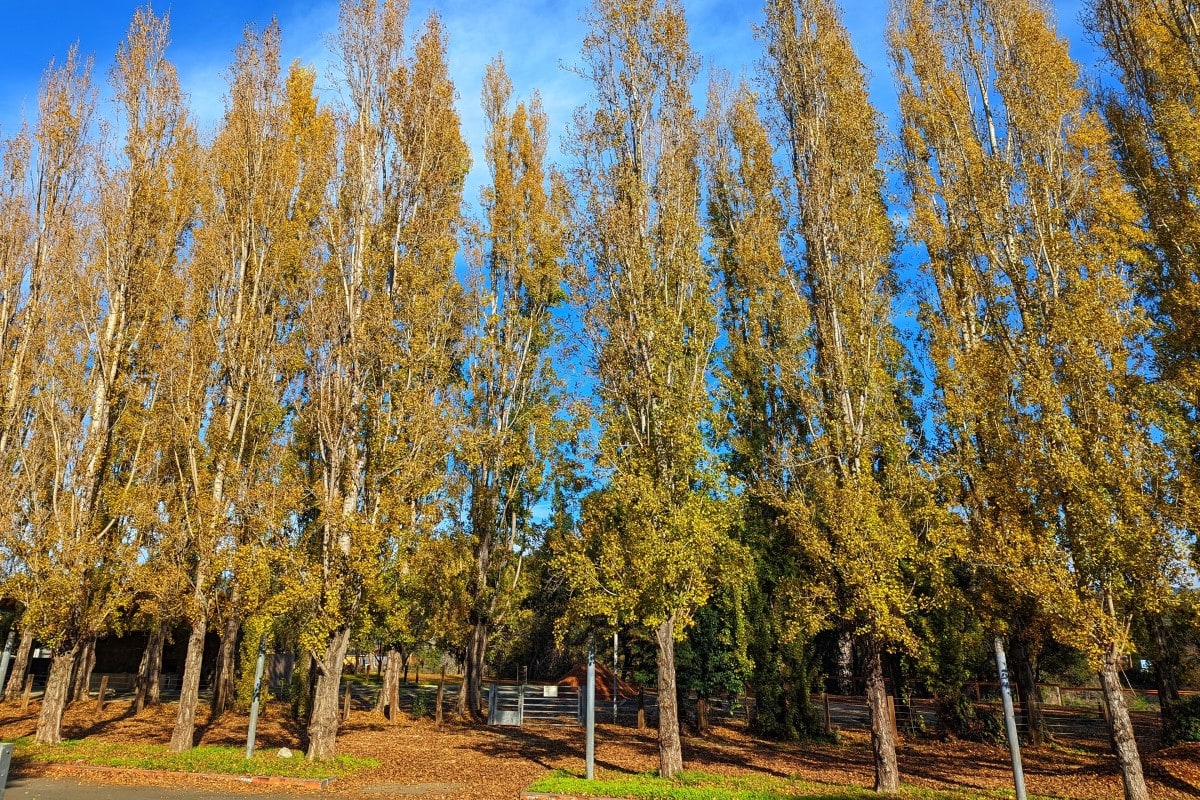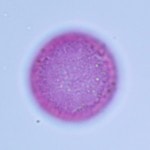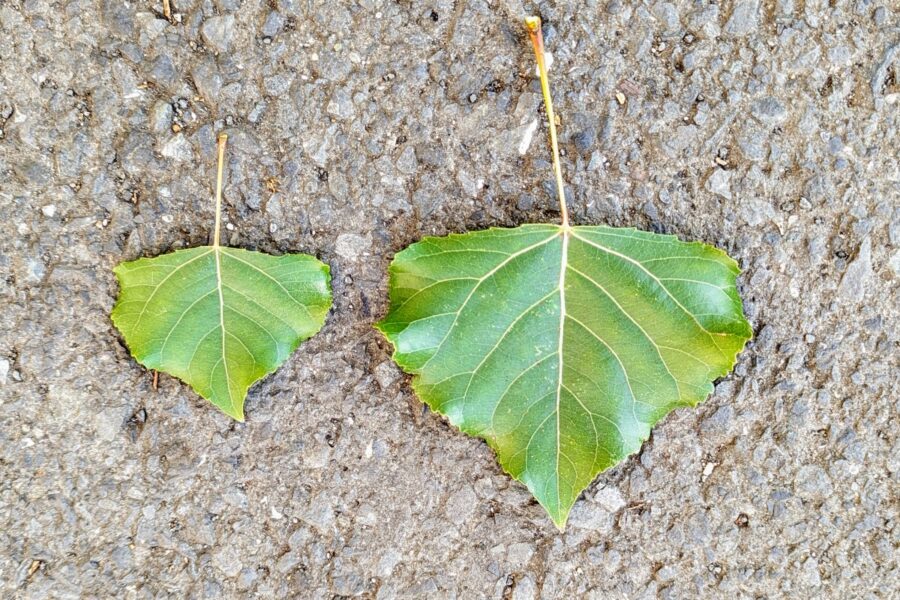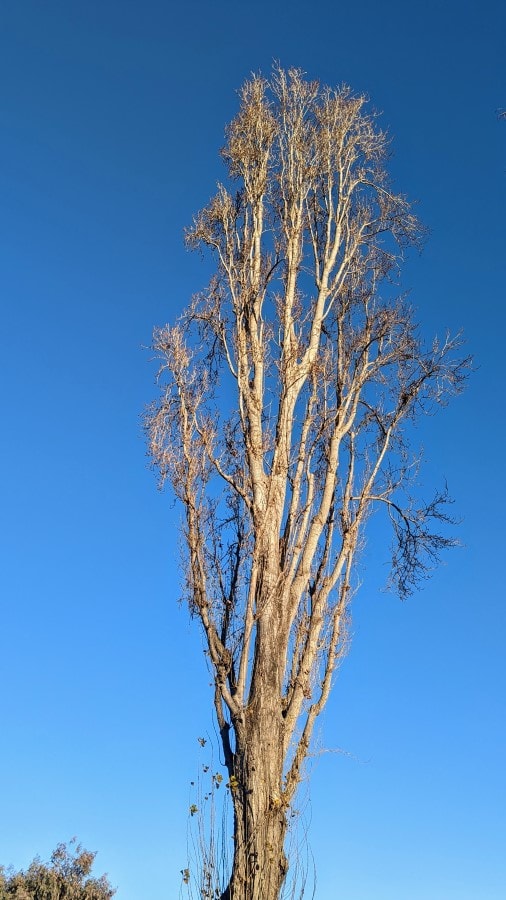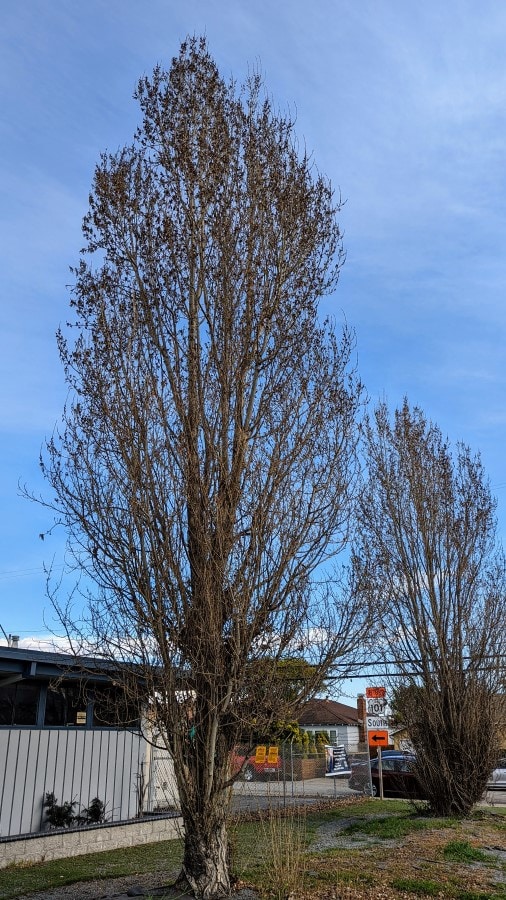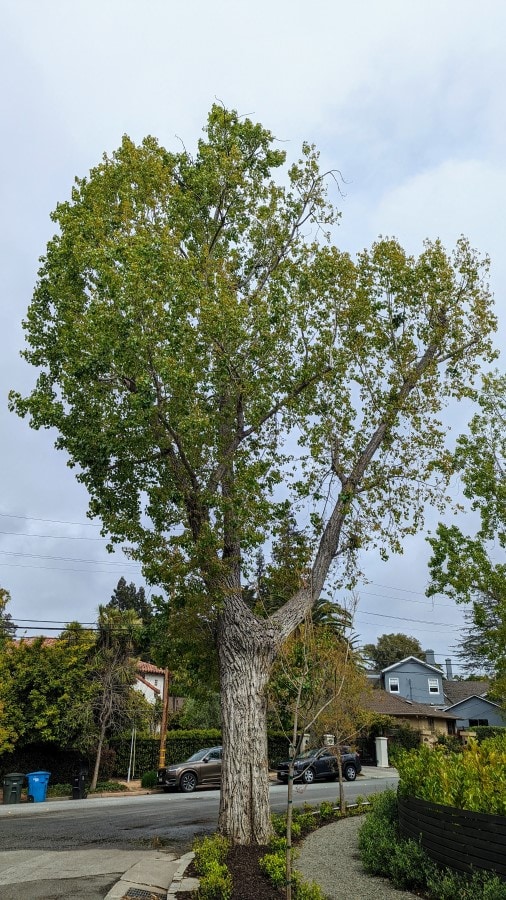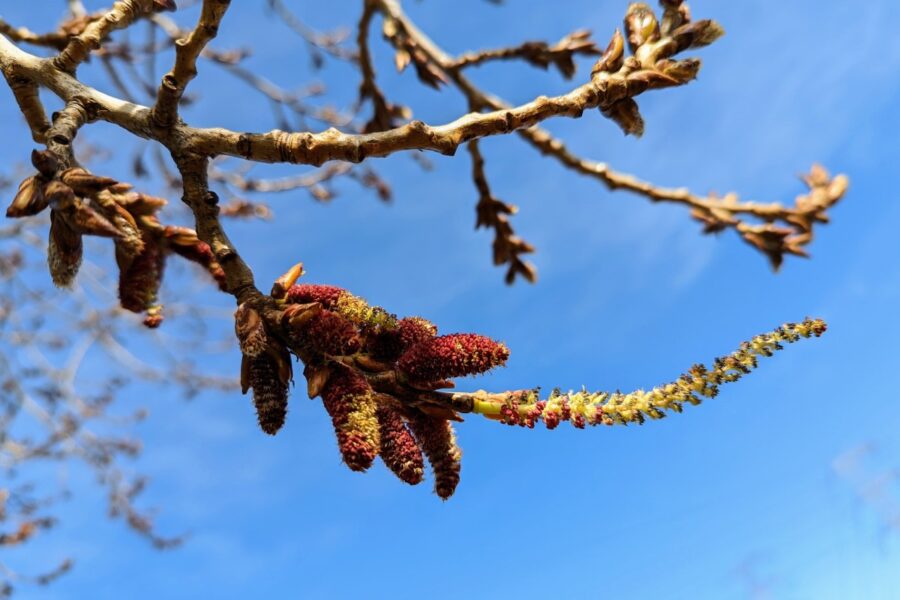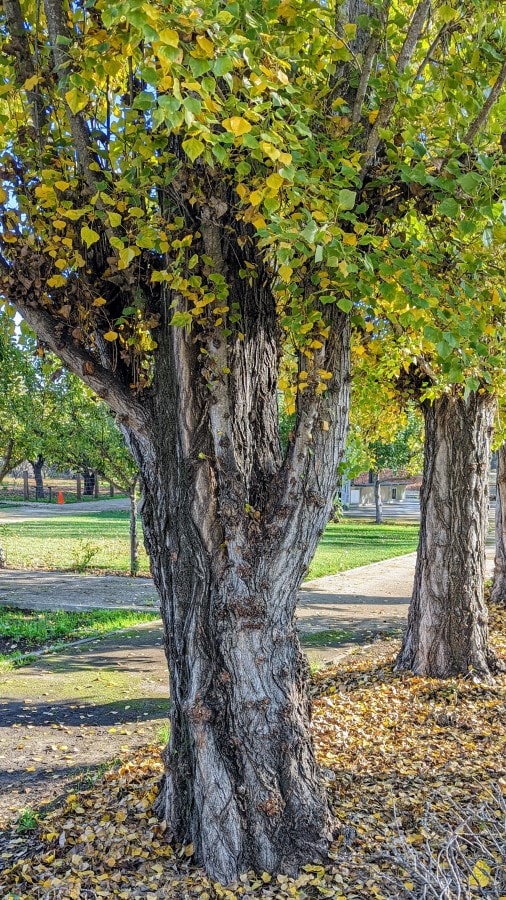In this article, with the help of photos, we will learn about poplar tree allergy. In addition, we will also learn how and when their pollen spreads.
The poplar trees (genus: Populus), are closely related to the willow (genus: Salix) and belong to the same family Salicaceae. The species within the genus Populus have common names of poplar, aspen, and cottonwood.
Poplar tree allergy facts and figures (Populus)
| Poplar tree allergy profile | Populus |
|---|---|
| Pollen season | Feb, Mar |
| Pollination type | Wind-transported; releases abundant pollen in the air |
| Gender | Dioecious: Male and female flowers are on separate trees. Only male trees release pollen. |
| Cross-reactivities with other pollen | Cross-reactivity within the genus and family – Poplar, aspen, cottonwood, and willow. |
| Pollen source | Male catkins that appear in winter before the leaves (See pictures below) |
| Tree leaves | Triangular with round edges, 2 to 4 inches long. Green in summer, yellow in autumn. |
| Tree shape | Column-like tall and straight. |
How to know if a poplar tree is releasing pollen?
The pollen is released only by male trees, which bloom during winter. The male catkins start to appear during winter before leaves. In fact, a pollen-releasing tree looks pretty bald because it only has dark-colored catkins, but no leaves.
Following is a series of photos of a poplar tree that is releasing pollen. The pictures were taken during the first week of March.
These catkins are the source of pollen. They stay on the tree for four to six weeks and then fall off. Each tree produces pollen for about six weeks each year.
When do poplar trees release pollen?
Poplars and Cottonwood trees release pollen during the months of February and March in the San Francisco Bay Area.
Black and Lombardy poplars are the most common poplar trees in the Bay Area. Although there are a few Fremont cottonwood trees in the area as well, I have yet to observe any aspen trees locally.
Weather conditions can shift the pollen season by a few weeks, each year. This is why it is best to observe the neighborhood trees during winter when the catkins have started to appear.
Even though there are only a small number of poplar trees in the Bay Area, each individual tree produces a large amount of pollen. Therefore, poplars overall produce a moderate pollen count during late winter and early spring.
Depending on the amount of rainfall and weather, the pollen season could differ slightly from one year to the next. This is why it is important to learn about allergy plants and their pollen.
However, if you live in the San Francisco Bay Area, you have an easier way out! I do regular tree inspections and air sampling in the area to provide reliable pollen updates on our website
What does the poplar tree pollen look like?
Poplar tree pollen does not have any pores or furrows. It is round about 30 to 40 microns, with a slightly thickened intine. The exine is flaky and looks like a peanut shell.
What do poplar trees look like?
Leaves
The trees have green triangular leaves that turn yellow during autumn. The tall and narrow canopy of the poplar is lush and full during summer and fall but becomes bare during winter.
Tree shape and appearance
The poplar trees have a unique tall, upright, and narrow canopy. These are the tallest deciduous trees in San Francisco Bay Area and their bald canopies are easy to spot during winter.
The cottonwood trees are not as columnar as poplar trees and their branches spread out a little more.
Flowers or Catkins
Poplar flowers are thin, 1 to 3 inches long catkins, which are a mix of red and green in color. Mature catkins often turn purple before falling on the ground.
Bark and trunk
The tree bark of the mature tree is grey with irregular ridges. Usually, a single trunk rises from the ground, and branches out anywhere at the height of 1 to 10 feet.
Poplar allergy summary
Generally speaking, poplar, cottonwood, and aspen pollen is present in the air during late winter and early spring all across the US. The clinicians usually test for allergies only to one of these species and ask patients to be vigilant about cross-reactivities to other trees among the genus Populus.
To understand cross-reactivities better, read my pollen allergy guide.
Sources
References
- Allergy Plants by Mary Jelks, M.D.
- Plant identification terminology by James G. Harris and Melinda Woolf Harris (Second Edition)
- Sampling and indentifying pollens and Molds by E. Grant Smith
- The trees of golden gate park and San Francisco by Elizabeth McClintock PhD.
All pictures, unless otherwise credited to another source, are taken by the author and are copyrighted material. The pollen picture is taken in our aerobiology lab using an Olympus compound microscope. The use of pictures is permitted with a link back to the source page on the internet, or, an attribution to allerma.com on the printed material.

